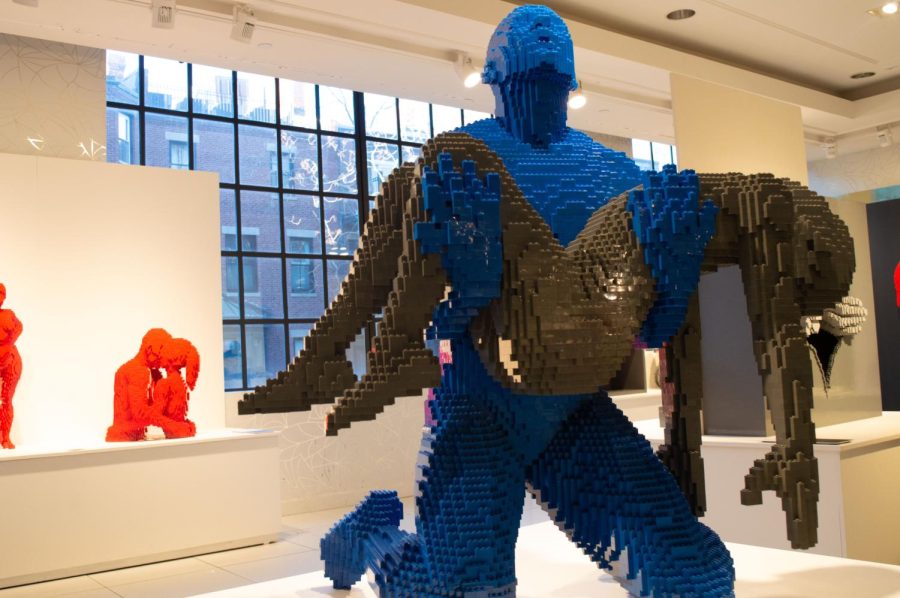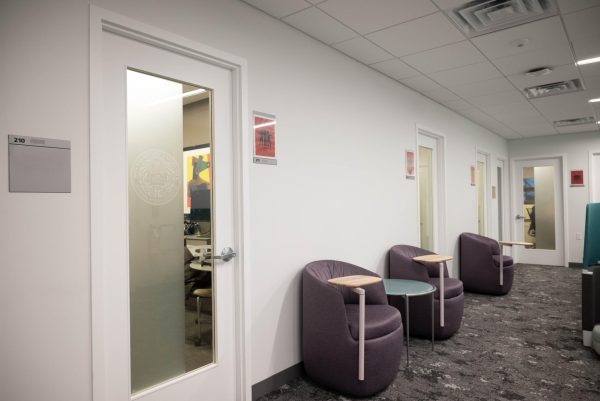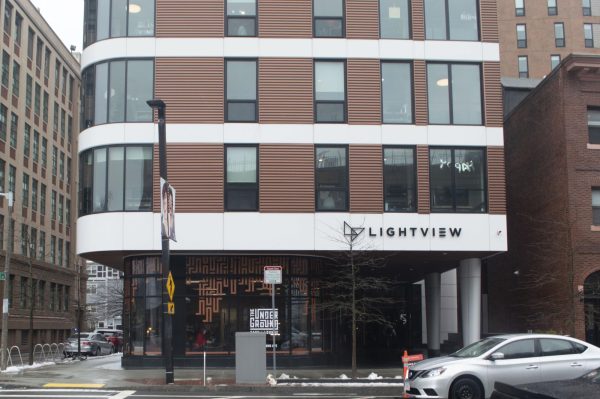Boston exhibition showcases grand sculptures made of Lego
In the foreground, one sculpture holds another, as lifelike in its anguish as the figure in its arms is lifeless. Behind them, the two figures in “The Kiss” embraced under happier circumstances.
April 18, 2023
Despite having been built with Lego, the sculptures in a new Boston exhibition are not child’s play. They are the work of Nathan Sawaya, a renowned Lego sculpture artist who builds custom 3D sculptures and whose work is currently on tour around the world in an exhibit called “The Art of the Brick.”
Sawaya began his art career after years of practicing as a corporate lawyer in New York City.
“I would come home at night and need a creative outlet,” he said. “Sometimes I would draw, sometimes I would paint, sometimes I would sculpt … and one day I thought about this toy from my childhood. Could I use it as a sculptural medium?”
Initially, Sawaya only worked on commissions in the evenings after work, but eventually decided to leave his job behind and pursue art full-time, focusing almost exclusively on the medium that made him stand out among the over-saturated world of commercial art — Lego bricks.
“The reason I use Lego is because if an artist’s role is to inspire, this is a way to capture people quickly and easily because of that familiarity with the toy,” he said. “I’ve traveled to every continent and everyone knows Lego bricks.”
The Boston exhibit includes about 70 sculptures built with over one million Lego bricks. Within the exhibit, patrons can see recreations of famous paintings and sculptures, including Da Vinci’s “Mona Lisa” and Van Gogh’s “Starry Night,” as well as Sawaya’s own original creations. While Sawaya said he finds more joy and emotional connection with his original art, he often comes back to art history in order to create a tangible connection between the art and the viewers, especially younger ones.
“How do you talk to a five-year-old about the Mona Lisa?” he said. “Well, if it’s made from a toy they’re familiar with, it does open that doorway into the conversation.”
On the top floor of the Boston exhibit, and included in each “Art of the Brick” exhibit, there are tables with loose Lego bricks on them for patrons of the exhibit to build their own creations.
“We have to have that loose Lego brick at the end, so that they can build whatever they can imagine,” Sawaya said. “When, hopefully, folks are inspired, they want to dive into their own creativity.”
Overall, Sawaya’s main goal is to inspire others to find creativity in their own lives, in whatever way they wish.
“I honestly believe everyone’s an artist,” he said. “It’s just, how much do you want to do it?”



















